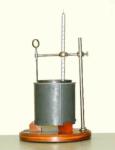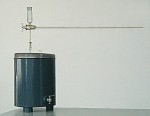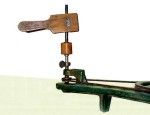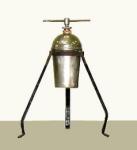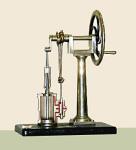Description
The tube of brass, which is very thin, is fitted in the cone of the rotational machine
with a cylindrical connection of fibres, so that the heat developed by friction cannot pass
to the rotation machine. The little vice is provided with two-cork pads. After introducing a
little quantity of ether into the tube which is closed with a soft stopper, if we slightly
twist the wing nut with the little vice, we reach the point of ebullition of the liquid and
the tension sufficient to expel the stopper with few turns.
|
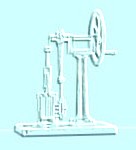

 Menu
Menu
